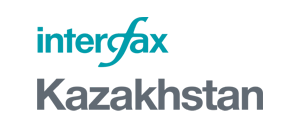Kazakhstan's National Bank Chair Grigory Marchenko:
THE NATIONAL BANK EXPECTS THE QUALITY OF THE SECOND-TIER BANKS' LOAN PORTFOLIO TO IMPROVE BY THE END OF 2010.

The National Bank may revise the inflation forecast. Kazakhstan's banking system is expected to slightly grow this year. National Bank Chair Grigory Marchenko has told Interfax-Kazakhstan in an interview about the Bank's plans, forecasts and expectations.
- Mr Marchenko, how would you comment on the Bank's financial results for the first six months?
- We only have information on the performance of the financial sector in the five months.
The deposits have been steadily growing to make 7.1 trillion tenge, or a 7.4% increase. However, this year the banks have offered 1.1% less loans than the last year, or only 7.6 trillion tenge.
- There have been fears lately that the inflation may go out of the expected range of 6-8%. Does the National Bank share the fears and what is being done to avoid the expansion of the inflation range?
- Currently, the National Bank is not planning to revise the inflation range.
I would like to say that not only the National Bank is concerned about the stability of the prices but the government as well because a high and inadequate inflation will adversely affect everybody. That is why the inflation is being controlled jointly by the National Bank, the government and local authorities.
The government is currently focused on preventing an unjustified growth in the prices for the basic consumer goods and services, supplying the domestic market with the most necessary goods and curbing any unfair competition and economic abuse by the entities occupying a dominant position on the market, and reducing the number of intermediaries between the goods producers and end users.
The National Bank is monitoring the domestic consumer market, specifically the prices for the main food and non-food products.
In case of a significant deterioration of the inflation dynamics, the National Bank will be able to make quick changes to the monetary policy and focus its efforts on slowing down the inflation. The National Bank has a sufficiently expanded set of tools to ease the inflationary pressure on the economy, which includes among others a refinancing rate, minimum reserve requirements and short-term notes and deposits of the National Bank.
The inflation stood at 4.4% June 2010 to December 2009 (3.9% June
2009 to December 2008), the annual inflation was at 6.8% (in December 2009 at
6.2%).
We expect the annual inflation to be at 6-8% at the end of 2010 (December 2010
to December 2009).
- Do you think the new Customs Union may lead to a rise in the prices in the future?
- The Customs Union requires that Kazakhstan, Russia and Belarus apply the same customs duties. However, if the customs duties on imported goods grow with a time lag, this may lead to an increase in the prices for imported goods and the inflation.
However, such processes are controllable and the government is quite capable of minimizing such effects.
- The National Bank expected the foreign direct investments in Kazakhstan to decrease in the first quarter of 2010. Has this forecast turned out to be true, based on the preliminary results for the first six months? If yes, how steep the decrease may be and when the situation may change for the better?
- As a matter of fact, when defining the republic's monetary policy for 2010 we forecasted that the foreign direct investments in Kazakhstan would decline, mainly due to a reduction in the financing of the North Caspian Project (NCP).
The forecast was driven by KazMunayGas's intention to cut down the expenses on the North Caspian Project. Early this year KazMunayGas announced its plans to reduce the 2010 NCP budget, which was $10.450 billion, by nearly $3 billion through optimization of the expenditures. If the plans had been implemented, the foreign direct investments in the republic in 2010 could have been below the target.
According to the reports, in 2009 the total foreign direct investments in Kazakhstan were valued at $18.4 billion, or a 6.7$ decrease year-on-year. The official statistics on the balance of payments say that the revenues from the NCP were below the projections. Nevertheless, the revenues to the national budget from the projects were the highest last year and it was quite reasonable to expect that the inflow of foreign direct investments in the country would decline if the financing of the NCP was cut down in 2010.
However, in May this year the mass media announced the NCP budget had been reduced to $8.688 billion only.
We expect that starting this year and forward foreign investments will be growing, especially in connection with the national program for industrial and innovation development in 2010-2014. Depending on the form of participation of foreign investments in projects (shareholding or not) the investments may be direct or indirect.
Preliminary results for the first six months will only be available in late July. So far the National Bank has information on the first quarter of 2010. The foreign direct investments in Kazakhstan in January-March this year totaled $5.2 billion, or up 52% as compared to the same period last year.
Following from the above, it is still premature to say if the inflow of direct foreign investments will be lower in 2010.
We should also be aware of the fact that investments in the NCP will be falling (as the capital expenditure will be declining) as the project will be nearing its completion. A decrease in the financing of the NCP may lead to lower foreign direct investments in Kazakhstan.
- Recently, the Kazakh National Chamber of Commerce, Atameken Union, has proposed to amend the legislation to give companies the right to restructure debts as the banks were allowed to. The proposal stemmed from the concern that sometimes debt restructuring is blocked by minor debt holders, which leads to the breach of the agreements with the other creditors and undermines the financial recovery plans. Do you think that the initiative is necessary?
- The original amendments to the Law "On Securities Market" provided only for restructuring of bond debts of the participants of "Road Map Business - 2020" who were undergoing financial rehabilitation and had the consent of at least 2/3 of the bondholders.
Later this provision was extended beyond the program participants to other issuers of debt securities. In case of altering the issue prospectus two criteria must be considered: the amount of bonds issued and the number of holders.
Of course, the companies in the real sector should have the right to restructure their obligations, including bond debts, but the consent of the bondholders must be treated with caution, taking into account the interests of both the large and small holders.
Therefore, in this case, we are more inclined to accept the position of the State Agency for Financial Supervision, suggesting that the holders of no less than 85% of the total amount of issued bonds, who constitute 75% of the total number of bondholders, can validate the decision on debt restructuring.
- The issue of creating Agrobank has been broached a few times before, but it never has come into practice. What steps should be taken to make this idea to succeed?
- The question of setting up a special agricultural bank have been repeatedly raised and addressed at different levels, while the National Bank firmly expressed its disagreement with the initiative referring to how inappropriate this idea was.
Indeed, specialized agricultural banks emerged in different countries at one time or another. However, these state-owned banks established to finance agriculture were all later turned into commercial banks due to the inability to diversify risks (the Russian Agricultural Bank, the Polish Bank Gospodarki Zywnosciowej SA, Agricultural Bank of China).
In addition, during the initial stage of independence and formation of the financial system in Kazakhstan virtually every industry had its own financial institution. However, those banks were either transformed into regular banks or declared bankruptcy (Kaztorgbank, Kazagroprombank).
The world practice shows that the most successful form of financing agriculture is a specialized cooperative loan institution.
The experience of Japan, France, the USA, Germany and Switzerland shows that financing agricultural projects can be successful only if the funds of the population partially secured by the government are involved.
At the moment Kazakhstan has formed a multi-level system to meet the needs of the farmers for financial services.
Thus, there are various specialized agencies formed to provide lending to agricultural producers. These include Agricultural Credit Corporation, KazAgroFinance, Agriculture Financial Support Fund, part of KazAgro, as well as credit partnerships, microcredit organizations and the State Fund for SME development. KazPost that has an extensive branch network also provides loans to small and medium businesses, including small agricultural enterprises.
In addition, 39 second-tier banks operating in Kazakhstan also offer loans to agriculture.
In May 2010 the share of agricultural loans in relation to the total loan portfolio amounted to 3.7%, while, the share of loans to industry in the total lending to economy was 10.5%.
Moreover, the concept of Kazakhstan's financial sector development in the post-crisis period, approved by the President on February 1, 2010, does not encourage creation of specialized industrial banks.
Therefore, taking into account the international experience, the multilevel system of agricultural lending, the futile efforts to create specialized banks in Kazakhstan, as well as the specific farming risks - seasonal works and high risks of losses, the National Bank does not support the idea of a special agricultural bank.
- What are the prospects for the banking sector of Kazakhstan based on 2010 results in terms of the quality of the loan portfolio, deposit base and asset growth?
- The problems faced by the banking sector due to the financial crisis regarding the quality of the loan portfolio, assets and equity will affect the banking sector in 2010. The positive thing, however, is that the banks are not experiencing the outflow of deposits or any shortage of short-term liquidity.
A certain improvement is expected in the quality of the loan portfolio by the end of 2010. Banks' slow credit activity, more rigorous lending policies, as well as restructuring of retail bank loans will all contribute to the rising quality of the loan portfolio. The state employment programs that curb the rise in unemployment in the face of the deteriorating economic climate also contribute to easing burden on the borrowers.
Furthermore, the banks with state participation: BTA Bank, Alliance Bank and Temirbank have adopted uniform standards for preferential mortgage lending, including three mortgage lending packages.
The deposit base of the banks is growing, though not so fast, but still we expect the deposit base will grow by as much as last year.
Alliance Bank and Temirbank have successfully completed debt restructuring, while BTA Bank is on the way. Thus, we can expect that in 2010 the problem of external debt repayment will be less acute than in the previous years.
The decline in the banks' external debts, their loan portfolios' quality and the overall stabilization of the country's economy will have a positive impact on the banks' assets and equity. The basic indictors of the banking system are expected to grow slightly in 2010.
Furthermore, the concept of the financial sector's post-crisis development provides for the improvement of the financial sector's management. The introduction of a counter-cyclical approach will allow tightening the regulation and supervision of the financial sector during economic growth periods and loosening control during a recession. The global economic crisis has demonstrated that the international financial community should pay more attention to minimizing the procyclicality of the financial sector's regulation.
- As it is known, despite a substantial decline in the loan portfolio the banks do not rush to write off the defaulted loans. What is the current share of the said loans and how may this situation change this year and in the future?
- As at June 1, 2010, the volume of the written-off defaulted loans amounted to just over 481 billion tenge, or 5.15% of the overall volume of the banks' loan portfolio.
It is quite obvious that the volume of non-performing loans to be written off will be growing as the share of non-performing loans in the structure of the loan portfolio of the banking system is very large. Currently, the banks are unwilling to write off such loans mainly because of the taxation of revenues from provisions. On the other hand, there are no mechanisms for efficient management of the collaterals by the bank after the borrower's default. After these problems are resolved, the banks will start writing off more bad loans.
- Does the National Bank plan to introduce any innovations by the end of the year, including legislative ones? Do you plan any changes in matters of currency regulation and control?
- The National Bank is currently devising a draft bill "On Introducing Amendments to Some Legislative Acts of the Republic of Kazakhstan on Financial Monitoring of Imports and Exports of Cash."
The draft bill amends the regulations on imports and exports of cash, travelers' checks and securities.
- Last year the National Bank suggested that foreign companies operating in Kazakhstan should secure some of their funds with the local banks and insurance companies. The Bank proposed about 20-30% share back then. At what stage is this initiative at the moment?
- Indeed, the National Bank offered the government to increase the share of Kazakh content in the financial services consumed by the foreign companies.
We propose placing at least 35% of the companies' account balances on deposits in the Kazakh banks, limiting foreign reinsurance practices and obliging the foreign companies to place up to 20% of issued securities on the Kazakh market.
The government and foreign companies are currently looking into this issue. We hope to see some practical results by the end of the year.
- What are the National Fund's prospects? How has the global financial crisis affected investments in the fund's assets and what is going to change in the future? What is the total market value of the National Fund's portfolio after the first half of 2010, including the currency portfolio? What are the profit dynamics of the fund's asset management?
- The National Bank has undertaken several steps to preserve the assets of the National Fund since the beginning of the crisis, which also affected the fund's assets investment structure. Thus, the share of the stabilization portfolio, which provides liquidity, has significantly increased. The equity share in the savings portfolio has decreased, and bonds placed outside the public sector have been transferred to the public sector.
This year the role of the stabilization portfolio has reduced due to the recovery of the international financial markets.
According to preliminary data, the total market value of the National Fund's currency portfolio for the last 6 months totaled approximately $26.5 billion as compared to $24.4 billion at the end of 2009, $27.4 billion at the end of 2008 and $21 billion at the end of 2007.
The National fund gained a positive profitability of 7.32% in 2009 vs. 2.28% in 2008.
- What kind of policies is the National Bank going to adhere to with regard to the country's gold and forex assets and its own assets? In particular, does the bank plan to expand the existing list of foreign currencies? What is the optimal share of the euro and dollar in the country's state reserves and the bank's assets? Does the bank plan to increase the share of gold reserves?
- The gold and forex assets are comprised of the following currencies: 40% in the U.S. dollar, 35% in the euro, 10% in the pound, 10% in the yen and 5% in the Australian dollar. There is a prospect of increasing the gold portfolio through purchases from the domestic producers.
- What are the National Bank's projections for the country's balance of payments in 2010?
- According to preliminary data, the price for Brent crude totaled $77.3 per barrel in the first half of 2010, which is 50% higher compared to the same period last year.
hus, it is a substantial increase in the balance of payments. In the first quarter of 2010 the current account surplus stood at around $3 billion or 11.3% of the GDP. The financial and capital account (including errors and omissions) in the first quarter of 2010 recorded a surplus of $1.3 billion.
The International Monetary Fund in its April review of the world economy (published annually in April and October) forecast an average global economic growth at 4.2% and an economic growth of key oil consumers - USA and China - at 3.1% and 10% respectively. At the same time, according to the OPEC, a significant growth of the world economy will be accompanied by a 1.12% increase in the demand for oil compared to 2009.
According to the forecasts by the international analytical agencies, the price for Brent crude will remain at $70-80 per barrel. In particular the World Bank's report on Russia's economy expect that the average annual price for Brent crude will total $78 per barrel as it is suggested that the OPEC countries will continue to adapt to an increasing demand, keeping prices within the set range of $70-80 per barrel.
These factors may lead to a surplus balance of payments, which will allow increasing international reserves of the National Bank.
- Thank you for the interview!
July, 2010
й 2009 Interfax-Kazakhstan news agency
References are obligatory
July, 2010
© 2025 Interfax-Kazakhstan news agency
Copying and use of these materials without reference to the source is prohibited
Archive





